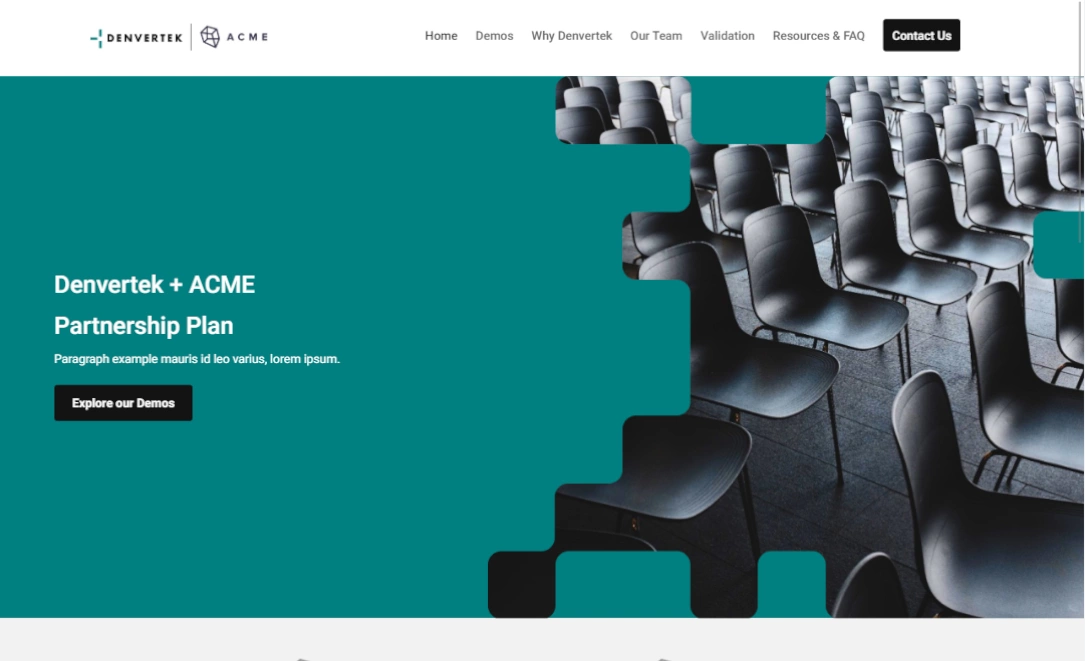With so many sales enablement resources out there, it can be hard enough to select the best tools for your business – and that’s before discovering how many tools are oriented towards B2C businesses.
If you’re looking for sales enablement strategies, tools, and technologies that are designed with a B2B audience in mind, then this is the article for you. Sales enablement can be a fantastically effective strategy for businesses of all types, encouraging cross-functional alignment, improved sales efficiency, and improved content management and visibility.
In this article, we’ll explore what makes a solid B2B sales enablement strategy and walk you through how to build your custom sales enablement playbook.
Elements of a B2B sales enablement strategy
The basics
To get a B2B sales enablement strategy off the ground, you’re going to want to start with the basics: training, content, tools & tech, and analytics. That means developing training and onboarding programs, building a plan for content including hosting solutions, and exploring how tech and tools can help you along the way. These are strategies that can help any business, not just those in B2B.
You’ll also benefit from defining who will work as a part of your sales enablement team. Typically, this will include members from both the sales and marketing departments. Your basic team structure might include the following:
- Managers (to lead the team and provide direction)
- Developers (ensuring that software meets user experience requirements)
- Analysts (to measure results and track progress)
- Marketing executives (to create the messaging for sales reps to adopt)
- Coaches (to carry out onboarding or run training sessions for sales reps)
With those basics underway, let’s now turn to consider the top three ways you can ensure your sales enablement strategy is built with B2B in mind.
Optimize sales ops
For your sales enablement strategy to be maximally efficient, aim to collaborate with your sales operations team.
Implementing new strategies can be made significantly easier by drawing on the know-how of the sales ops team, who can help you identify the best ways to streamline sales enablement processes. This is especially important for B2B businesses since you’re likely to be dealing with larger purchases. Ensuring processes are as seamless as possible from the get-go can help to encourage businesses to commit to a sale.
Leverage (the right) tools
Making sure you’re using the right tools in the right places will both improve your efficiency and potentially eliminate overhead by automating processes.
In fact, you can build your sales enablement technology stack to help with almost any part of the B2B sales funnel, from searching for B2B sales leads with email services like MailChimp, to sending a gift after closing a deal with Sendso.
Stay in the know
How businesses buy has been evolving just as rapidly as how consumers buy, which means it’s more important than ever to stay up-to-date on B2B trends.
For example, in 2021, nearly 87% of buyers demonstrated a preference for self-serve. The year after, this increased to almost 100%. A comprehensive sales enablement strategy would be able to identify this information and promptly put it into action – in this example, that might look like designing sales training that is oriented around a quick and easy purchasing process that placed control into the hands of the buyer.
Building your B2B sales enablement playbook
Armed with the broad strokes outlined above, you’re ready to start putting together a B2B sales playbook for yourself.
A collection of talking points to common objections, KPIs, value props, and competitive analyses, a sales playbook is an essential tool that equips reps with all the information they need to do their best work, right at their fingertips.
Follow these 4 simple steps to get started building your B2B sales enablement playbook:
Step 1: define your target market and ideal customer profile
Knowing your target audience inside and out is one of the most important steps you can take as a business, and that means it’s also one of the most important things to include in your playbook. You can take an in-depth look at exactly how to create an ideal customer profile in our comprehensive Ideal Customer Profile guide, but essentially it’s a detailed portrait of your dream customer. And yes, that applies to B2B customers, too!
A good place to start is by asking questions about your ideal customer, including:
- What business are they in?
- What do they do, and what does your product help them do?
- What problems or obstacles do they face (specifically as well as in their industry)?
- How can your product or service help them overcome these obstacles?
Step 2: conduct industry (and competitor) research
Getting the lay of the land when it comes to your business and how it’s positioned compared to competitors will help your reps greatly. The industry reports you’ll want to see will analyze trends and provide useful statistics and facts. Many places will allow you access to industry reports such as the Commerce Research Library.
To get more specific, you’ll likely need to undertake your own research – after all, only you know who your biggest competitors are. This research should uncover what products your competitors offer and what tactics they’re using to advertise them. This can be crucial information to have on hand as you craft your sales enablement strategy and train your reps.
Step 3: create targeted high-quality content
Sales enablement content needs to not only be of high quality but also to be continuously refreshed so it remains accurate and up-to-date. This content can be used for both internal and external purposes, helping reps to improve their selling skills, customers to make a purchase, or lead-generating to draw in new clients. Whatever the goal, a good sales enablement program will need plenty of targeted content to see the improved performance you’re hoping for.
That means you’ll need to choose a smart hosting solution like Zoomforth to create your content. It has a simple-to-use design and robust analytics that will make launching your content program and keeping it up-to-date a breeze.
Step 4: Create a comprehensive onboarding and training program
Training and coaching encompass far more than just onboarding – though that’s important, too! Thanks to their benefits, training and coaching can also help build existing sales reps’ skills as well as refresh them.
You have plenty of options when it comes to creating a training program, meaning you can customize your solutions to fit your company’s size and budget. Whether that takes the form of in-house coaches and trainers or access to outsourced training sessions or courses, a comprehensive training program will form a firm foundation for your sales enablement playbook and strategy.
Advance your sales enablement strategy with Zoomforth
Zoomforth is the perfect tool to serve as one of the cornerstones of your sales enablement solution strategy. There’s no design or coding skill necessary to get started, just use the simple drag-and-drop tools to start creating and hosting your sales enablement microsites. Plus, custom templates make it easy to make sure everything stays on brand.
Focused on analytics? No worries. Every Zoomforth site gives you access to real-time analytics so it’s easy and quick to optimize your pages as you learn more about their performance. And thanks to the Zoomforth dashboard, you can track who’s visiting your site and even what they’re looking at while they’re there. Easy-to-read graphs and charts make it simple to share that info with your team, too. Request a demo today.



